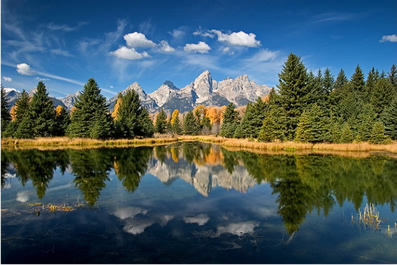
The Environment
We all share one planet. There is always beauty in the trees, in the water, and in the organisms that exist in our globe. There is no freedom and no liberation without a strong planet. That's self evident. The Clean Air Act and other laws did a lot to help reduce pollution in urban and rural areas for decades. Yet, much work is still needed to strengthen our environment. Over the course of time, environments change constantly. We have seen record heat in our time, extreme weather, and other issues of importance. Therefore, it is key for all of us to fight for environmental justice. That means that we want clean water to be given to the people of Flint, Michigan. We desire quality, universal healthcare for all. We want toxic waste dumping and pollution curtailed and eradicated. We want continued investments in anti-smoking endeavors. We want to combat lead poisoning and the end to environmental racism. The cause of helping the Earth is the cause of our lives.
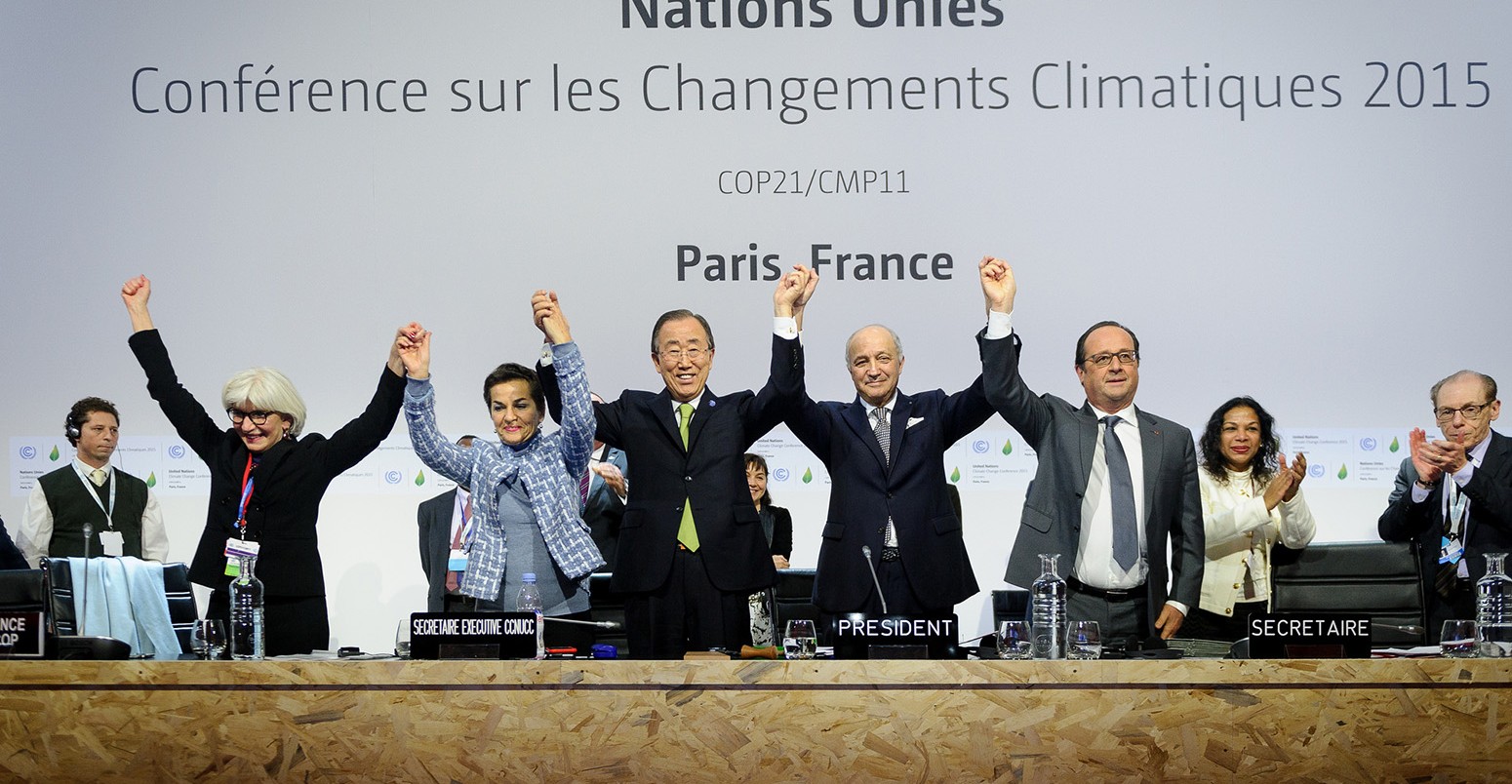
Climate Change Agreement
In Le Bourget or the suburbs of Paris, from November 30 to December 12, 2015, there was the 2015 United Nations Climate Conference. It has been called COP 21 or CMP 11. This comes after the 1997 Kyoto Protocol. The conference was about negotiating the Paris Agreement which dealt with reducing carbon emissions as it relates to climate change. The plan was to try to decrease many degrees Celsius worldwide (involving climate change) in a certain span of time. This led to the establishment of the historic Paris Agreement. Prior to the conference, 146 national climate panels publicly presented draft national climate contributions (called "Intended Nationally Determined Contributions", INDCs). These suggested commitments were estimated to limit global warming to 2.7 degrees Celsius by 2100. The 2 biggest emitters in the globe are America and China. After negotiations, by December 12, 2015, the participating 195 countries agreed by consensus to be final. The members agreed to reduce carbon emissions. Many demonstrators during that time either want a stronger regulation or are involved in fighting for environmental justice in general. Demonstrators existed worldwide and especially in Paris. The Paris Agreement was signed after the conference in April 22, 2016. It is effective by November 4, 2016 onward. April 22 is Earth Day. The agreement is part of the United Nations Framework Convention on Climate Change (UNFCCC). It deals with greenhouse gases emissions mitigation, adaptation and finance starting in the year 2020. The language of the agreement was negotiated by representatives of 195 countries at the 21st Conference of the Parties of the UNFCCC in Paris. It was signed in New York City. The head of the Paris Conference, France's foreign minister Laurent Fabius, said this "ambitious and balanced" plan is a "historic turning point" in the goal of reducing global warming. The agreement wants to hold global temperature increases below 2 degrees Celsius.
As of December 2016, 192 states and the European Union have signed the agreement. 128 of those parties have ratified or acceded to the Agreement, most notably China, the United States and India, the countries with three of the largest greenhouse gas emissions of the signatories' total (about 42% together). The Paris Agreement comes after the Kyoto Protocol and after the failure of the Copenhagen Accords. The Paris Agreement is a historic agreement. The key in making real change is to preserve the forests. There is a great possibility that between now and 2020 alone, we could lose 1,460,000,000 acres of tropical forest and 273,750 species. We must also restore degraded and deforested land to purpose. There are 2 billion hectares of degraded and deforested land across the world with potential for restoration. Restoration of degraded and deforested lands is not simply about planting trees. Lands must be fertile and restored land ought to exist when protecting animal plus plant species. We must also restore degraded and deforested land to purpose. Achieving the 350 million hectare by 2030 goal would result in estimates of 0.6-1.7 gigatons CO2 sequestered per on year average, reaching 1.6-3.4 gigatons per year in 2030 and totalling 11.8-33.5 gigatons over the period 2011-2030. Even restoring 150 million hectares would capture 47 gigatons of CO2, and reduce the emissions gap by 17 percent. That is why forest restoration is important in fighting climate change. With its strengths and flaws, the Paris Agreement outlines the urgency to advance true environmental justice.
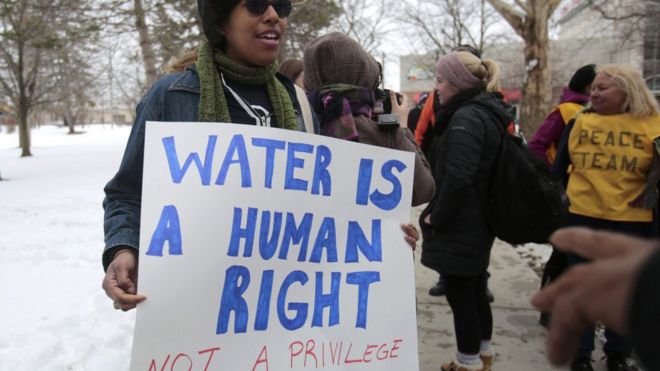
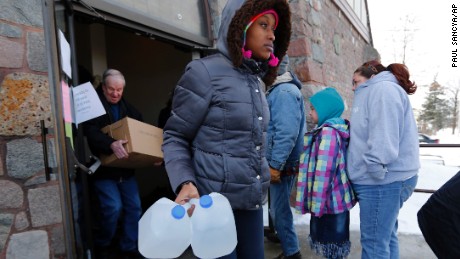
Flint, Michigan Updates
One of the most important environmental crisis in the 21st century is about the Flint water crisis. Corporations allowed poisoned water to go into the Flint area after clean water from the Detroit area was rejected. Activists have helped people in Flint, but more work is needed. Many communities nationwide and worldwide face lead contamination too. A Reuters report found that almost 3,000 areas in America have lead poisoning high rates. Some of these areas are found in Baltimore (according to the Reuters report, Freddie Gray, who was from Baltimore and was killed at the custody of the police in April of 2015, was a victim of lead poisoning. Gray and his family filed a lawsuit against the landlord of the row house where they were living in Baltimore’s Sandtown-Winchester neighborhood in 2008), Cleveland, and Philadelphia. The CDC doesn’t have a regulatory authority to force states to act to end this massive level of lead poisoning in America. There has been a very significant drop in tested levels of lead in blood samples since the US government banned the use of lead in gasoline about 40 years ago, but we have a long way to go. The providing of clean, safe drinking water is a human right. All human beings need access to water for survival literally (early civilizations in Sumeria, Egypt, ancient Rome, ancient Greece, etc. used water treatment technologies. Ancient Rome had aqueducts to spread water over hundreds of miles. The Industrial Age improved the treatment of distribution of water).
Philadelphia built the first US municipal water system beginning in 1801 in the wake of a devastating yellow fever epidemic. Water was piped into the city and was freely available to citizens at public hydrants. It was also the first city in the world, in 1804, to use cast iron pipes for its water mains. Water is necessary for agriculture, industry, personal hygiene, and cooking. We know that the Flint disaster is not just about lead poisoning in the water supply. It is about all levels of government having authorities that made it their duty to ignore studies of Flint high level lead levels and the lack of oversight to fight against this problem. Local officials, with the complicity of the state government and the federal Environmental Protection Agency, made the decision to use highly corrosive water from the Flint River in place of the city’s longtime water source without applying corrosion controls.


The Flint River water leached lead from the city’s antiquated piping, leading to the contamination of the water supply. Flint River water is also linked to an outbreak of Legionnaires disease that caused at least 10 deaths. Flint is a victim of deindustrialization too and the working class and the poor nationwide have been stripped of their economic rights. This is a very important issue. Less than one percent of the earth’s water is suitable for drinking in its natural state. The rest is in the oceans or the polar ice caps. Some 98 percent of liquid fresh water is ground water, much of it very deep beneath the earth’s surface, making pumping expensive. Despite this, there is ample water to supply human needs given the development of modern technologies. This is why lead pipes should be banned and eradicated nationwide and worldwide.
A nationwide, multibillion dollar infrastructure project is needed to replace lead pipe and to provide safe drinking water to all from Flint to other communities. Private interests (in pursuit of capitalist profit instead of advancing the social need of humanity) should never dominate every aspect of our economic and social life. We need public power as the power of the people is powerful enough to change lives positively.


Environmental Health
Environmental health is a key part of human development. When I was a child, I had asthma. I had to take allergy shots throughout elementary school. I had to take medicine after having an episode of asthma problems. Today, I don’t have symptoms of asthma anymore, but millions of people in America and worldwide suffer asthma and environmental health issues right now. Therefore, this issue is very personal with me and I desire our environment to be better. Environmental health deals with the survival of humanity and the rest of the ecosystem plainly speaking. Therefore, we believe in dealing with human health in progressive ways and building up the ecosystem. With the recent flooding in California, it is important to invest in infrastructure in California and nationwide. We want affordable housing for humanity. We have a problem of childhood lead poisoning that must be addressed. We want noise pollution control. We don’t want hazardous waste released in the environment. We believe in regulations that promote food safety involving agriculture, transportation, food processing, etc. Recycling is important in building our lands and we want the quality of life enhanced among the human family. The Toxicology and Environmental Health Information Program (TEHIP) is a comprehensive toxicology and environmental health web site that includes open access to resources produced by US government agencies and organizations. It is maintained under the umbrella of the Specialized Information Service at the United States National Library of Medicine. TEHIP includes links to technical databases, bibliographies, tutorials, and consumer-oriented resources. It has databases too that give people information on important environmental issues.
The organization Truth is one of the greatest organizations that fight smoking and air pollution. For decades, activists have exposed the corrupt policies of Big Tobacco. We not only fight smoking, but we believe in investing in helping people with smoking addiction and those who suffer illnesses and diseases as a product of smoking. We don't nonviolent people with drug addiction to be placed into prison. We desire treatment for them. We know that low income neighborhoods are more likely to have tobacco retailers near schools (some tobacco companies even came into the Supreme Court to maintain advertising near school grounds). Drug companies in America target cigarette ads in black communities more than in other communities (in about 10 times). That is profiling and it’s wrong. The Michigan Civil Rights Commission said in a report that the Flint drinking water crisis has its root causes in historical and systemic racism. It exposed the problem as a complete failure of government and wants a rewrite of the state’s emergency manager law and bias training for state officials. "Would the Flint water crisis have been allowed to happen in Birmingham, Ann Arbor or East Grand Rapids?" the commission asks in the 135-page report. We believe that the answer is no, and that the vestiges of segregation found in Flint made it a unique target." "The people of Flint did not enjoy the equal protection of environmental or public health laws, nor did they have a meaningful voice in the decisions leading up to the Flint water crisis," it said. Some want emergency managers to be repealed to be replaced with more democratic processes. Economic oppression and racism must end in the world.

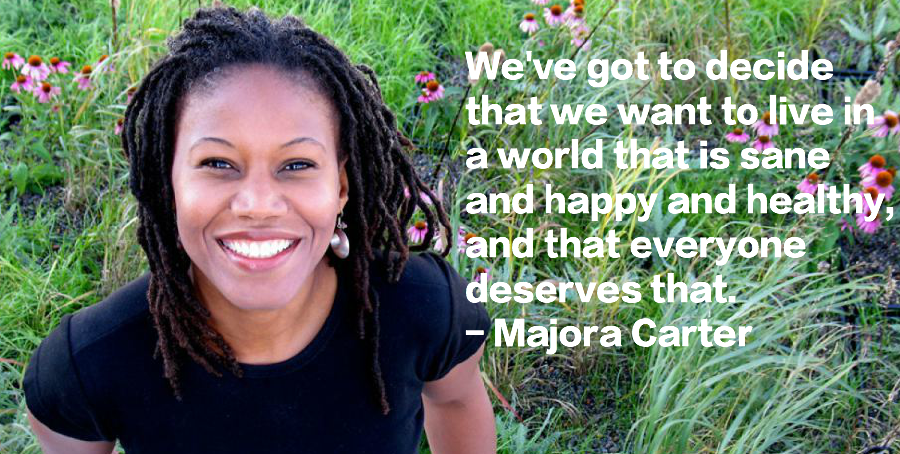
History of Activism
For centuries, heroes have fought to improve the environment. June 30, 1948 was the time when there was the first piece of American legislation to lay down federal regulations of water quality. The law was the Federal Water Pollution Control Act. It was passed by Congress. Known as FWPCA, it would go through amendments in 1956, 1965, and 1972 in expanding the government’s authority in water pollution control. Sulfur dioxide emissions killed 20 people and harm over 600 people who went into the hospital in Donora, PA (in the date of October 30-31, 1948). It came in the form of smog. This caused the first U.S. conference on air pollution in 1950 as it was sponsored by the Public Health Service. Many people researched about how DDT caused the harm of the ecosystem like the disappearance of butterflies in New Jersey. The Nature Conservancy was formed in D.C. in 1951. Its purpose was to protect ecologically important lands and waters worldwide. Since its existence, it has protected more than 119 million acres of land and about 5,000 miles of rivers globally. It has more than one million members today and operates more than 100 marine conservation projects. A massive smog incident in New York City exacerbates asthma and other lung conditions. It killed from 170 to 260 people in November of 1953. Extra smog incidents would kill people in NYC again in 1962 and in 1966. The Paley Commission released Resources for Freedom (on November 20, 1952) which details the United States’ increasing dependence on foreign sources of natural resources and argues for the necessity to transition to renewable energy. This document was one of the first to argue both for the dire need for Americans to stop their reliance on oil and for the potential of solar energy to fulfill that chasm.
William Paley, chair of the presidential commission, establishes Resources for the Future later in 1952, an organization dedicated to independent environmental research. The Silent World by Jacques Cousteau (of 1953) introduces the world to underwater adventure, and ushered in a new global interest in oceanic life. In 1956, Cousteau’s documentary film of the same title will win the Academy Award for Best Documentary Feature. Even President Eisenhower in 1955 talked about the problem of air pollution in his State of the Union Address and in a Special Message to Congress back in January of 1955. The Air Pollution Control Act was passed in July 14, 1955. It addressed air pollution and it’s the first legislation of its kind. It dealt mostly with state control and the federal government had no means of enforcement back then. The Sierra Club in April of 1956 prevented the construction of Echo Park Dam in Utah. Carbon levels increased by 1960 in above 300 parts per million. Rachel Carlson’s “Silent Spring” exposed the overuse of DDT in the environment. It wanted to stop the overuse of pesticides. This book grew the modern environmental movement. President John F. Kennedy charged his Science Advisory Committee to review the book’s claims. The Committee reported that the conclusions in Silent Spring are generally correct, and by 1972 DDT will be banned in the U.S. By 1961, California started to regulate emission standards in its vehicles. The Clean Air Act of 1963 dealt with air pollution and emission starts.

LBJ’s Great Society was heavily pro-environment. The Water Quality Act of 1965 increased federal control over water quality. The Motor Vehicle Air Pollution Control Act sets the first federal automobile emission standards. It was signed in October 20, 1965. LBJ famously stated on February 23, 1966:
“To sustain an environment suitable for man, we must fight on a thousand battlegrounds. Despite all of our wealth and knowledge, we cannot create a redwood forest, a wild river, or a gleaming seashore. But we can keep these we have.”
LBJ signed the Endangered Species Act, the Wild and Scenic Rivers Act, and other progressive legislation. Denis Hayes fought for environmental issues too. He and an U.S. Senator from Wisconsin (on December 1969) organized a national environmental teach in about environmental issues. Earth Day came about in April 1970. It wanted environmental justice and about 20 million people in America alone participated in it. Nixon allowed Congress to pass the Environmental Protection Agenda in handling American environmental policy. NOAA monitors oceans in 1970. NOAA stands for the National Oceanographic and Atmospheric Administration. Nixon would pass pro-environmental legislation. Activists from the 1970’s to the present would fight for alternative energy, against toxic waste, for the protection of animal species, and for the development of our society constructively. Many environmentalists in world history are John Muir, Rachel Carson, Edward Abbey, Aldo Leopold, Julia Hill, Henry Davis Thoreau, Chico Mendes, Wangri Maathai, Gaylord Nelson, David Brower, and other human beings.

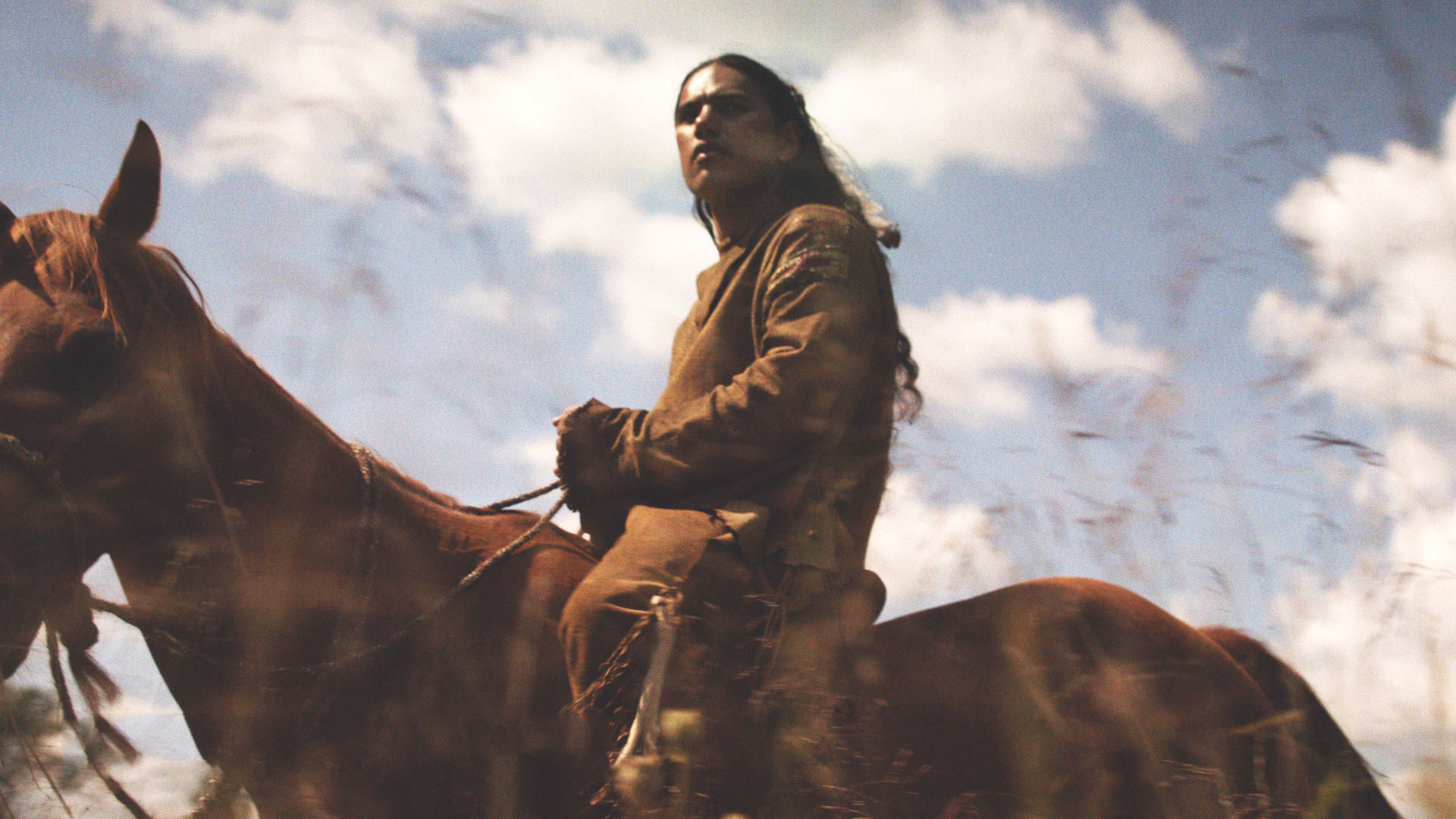
The American West
For thousands of years, the American West has been filled with diversity. From the beginning, Native Americans originally lived in those lands. They organized families, cultures, religions, celebrations, and other aspects of complex, human civilizations. Later, those of African and European descent went into the American West. The American West has been glamorized by movies, many people, etc. Yet, when you see the truth, the history of the American West is complex. It has been filled with Native American culture, European settlements, genocides against Native Americans, deaths, the Civil War, cultural interactions, legal changes, cultural changes, etc. In essence, the American West outlines a large section of the American experience. We must expose the criminals of the American West who used bigotry and oppression against Native Americans. Also, it is important to acknowledge the people of the American West who have shown respect to Native Americans, who have shown tolerance, and who have great human character. The whole picture must be shown in describing what the West is all about. Western culture included cowboys and settlements. It includes also inventions, heroes, villains, and other human beings who made an impact on the human experience.
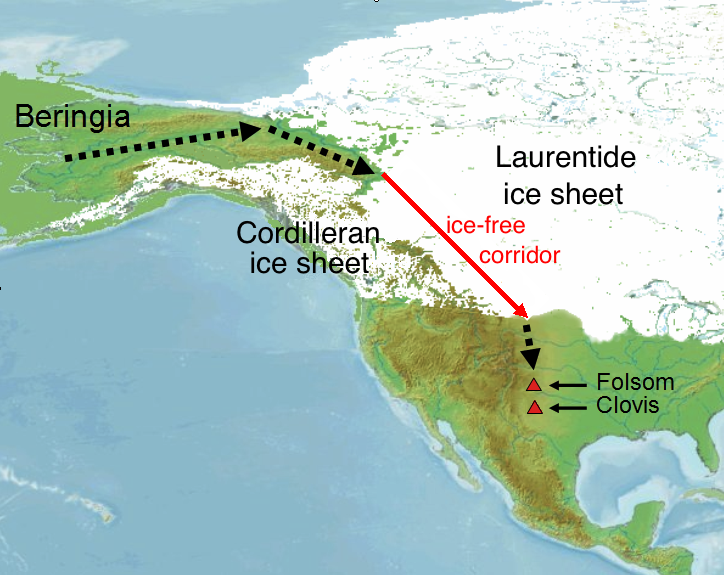

The Beginning
In the beginning, the Ice Age caused ice to surround the northern section of the Americas. This was the last Ice Age of world history. Around this time in about 60,000-25,000 B.C., Native Americans traveled across the Bering Strait into Alaska from Siberia. Beringia, a land bridge, existed back then to connect Asia and Alaska. According to anthropologists and researchers, 3 major waves of migrations existed from Asia to America. After the Quaternary glaciation or the last Ice Age ended, the sea level increased in North America. Native Americans traveled all over the rest of North America between 12,000 and 7,000 B.C. By 8,000 B.C, the North American climate was very similar to today’s climate. The first Americans soon diversified into hundreds of culturally distinct nations and tribes. One ancient culture was the Clovis culture in North America. It appeared in North and South America. Many people back then used spears and other objects from before 8,000 B.C. Na-Dené-speaking peoples entered North America, starting around 8,000 B.C., reaching the Pacific Northwest by 5.000 BC. They came into the Great Plains and Canada. They were the ancestors of the Athabascan speaking peoples like the Navajo and the Apache. Poverty Point culture is a Late Archaic archaeological culture that inhabited the area of the lower Mississippi Valley and surrounding Gulf Coast. The culture thrived from 2.200 BC to 700 BCE, during the Late Archaic period. Evidence of this culture has been found at more than 100 sites, from the major complex at Poverty Point, Louisiana (a UNESCO World Heritage Site) across a 100-mile (160 km) range to the Jaketown Site near Belzoni, Mississippi.
Totem poles were found in Wrangell, Alaska.
Poverty Point is a 1 square mile (2.6 km2) complex of six major earthwork concentric rings, with additional platform mounds at the site. Artifacts show the people traded with other Native Americans located from Georgia to the Great Lakes region. There were numerous mound sites of complex indigenous cultures throughout the Mississippi and Ohio valleys. They were one of several succeeding cultures often referred to as mound builders.

Native American diverse cultures
Native American cultures are diverse. In ancient times, there was the Pacific Northwest region from Oregon to Alaska. There was the Kwakiutl, Nootka, and the Haida people. They used resources from the sea to live. They hunted whales in canoes. Some of their canoes had as high as 15 people in them. Northwest Native American tribes had the potlatch or a ceremony where people gave food, drink, and gifts to the community. In the Southwest, Native Americans were in the Hohokam culture. There was irrigation to produce harvests of corn, beans, and squash. They created pottery. They traded and had contact with Mesoamerican people to the south of them as well. Some of them lived in central Arizona. North of the Hohokam people were the Anasazi. The Anasazi lived in pueblos or villages of large apartment style location made up of stone and adobe (or sun backed clay). The Anasazi traded with the Plains tribes too. Native Americans in the Mississippi River Valley were known as the ancient Mount Builders. Mounds were constructed by the Adena from 1,000 to 200 B.C. The Coles Creek culture was found in the Lower Mississippi Valley. The Midwest had the ancient Hopewell culture, which had burial mounds, trade, and the Great Serpent Mound in Hillsboro, Ohio is related to the Hopewell civilization. Northeastern tribes include the Iroquois people, the Delaware, Miami, etc.
Tribes in North America traded from the Atlantic Ocean into the West Coast. Native Americans believed in multiple nature spirits. Many would value Nature very greatly and many Native Americans believed that Nature belonged to all not one person owning lands by themselves. Many believe in the one Supreme Being or the Great Spirit above all other spirits in the Universe. Native Americans used rituals and ceremonies in order to appease the spirits and establish true peace and harmony. To Native Americans, the land was sacred and humans must alter the land as little as possible. Native Americans love family and many families organized into clans or groups of families who are descended from a common ancestor. Many clans lived together. Totem poles in fact weren’t just created for artistic purposes. They were created to outline the symbols of the specific clan, especially in the Pacific Northwest.
The pre-Columbian era of the Americas is important to be made known. Indigenous societies spread in the Americas. There were the flourishing, complex cultures of the Olmec, Toltec, Teotihuacan, Zapotec, Mixtec, Aztec, and Maya civilizations. The Inca Empire, the Moche culture, the Muisca Confederation and the Canari existed in the Andres. The Norte Chico civilization of Peru existed around the same time as ancient Egypt. In North America too, there were the Mound cultures. These cultures had urban settlements, agriculture, civic organization, and monumental architecture. They had complex societal hierarchies. Oral traditions were common and written languages existed. Many European colonists burned many pre-Columbian written records, which was wrong.
In North America, Native Americans groups of human beings developed greatly. In the Eastern Woodlands of America, there were the Algonquian, Siouian, and Iroquoian peoples. Many Iroquois peoples in the Eastern regions of America constructed palisades or buildings for living and protection. They created baskets from reeds too. Many Iroquois and other tribes in the region were hunters. They wore clothing from animal hides. They were famous for creating wampum. Wampum involve using cylindrical beads in a ways that form intricate designs. The Iroquois not only had important traditions for their culture. They organize confederations as powerful alliance would grow among tribes too.
The Great Plains Native Americans readily traveled in plains and other areas of the Midwest and Mountain West. They used the buffalo for a myriad of purposes from clothing to food. Some were in the Eastern Plains like the Iowa and the Nakota. In the massive Great Plains, tribes existed like the Lakota, the Cheyenne, the Kiowa, the Crow, and others). The Lakota used moccasins, quills, literature in the form of pictures, and tepees. The Plains Native Americans also included the Comanche, and the Apache.
In the Southwest of America, Native American formed adobe homes. There were massive irrigation and a surplus of food plus other resources. Weaving was commonplace and they grew corn. Clay ovens were used to cook food. They loved kira or ceremonies in small rooms.
In the Pacific Northwest, Native American tribes used whale hunting. They ate salmon, seals, elks, deer, etc. They traveled in canoes in the water. One of the most well known of the tribes in the region was the Kwakiutl. Other tribes were the Tlingit, Harda, and the Noutke. These human beings used barter to exchange goods and services. They organized in clans. Some used totem polls to signify families and outline excellent creative art.
The Arctic region had the 2 major Native American tribes of the Aleut and the Inuit. The Aleut lived primarily in Alaska. The Inuit lived (back then and today) in Alaska, Northern Canada, and Greenland. The Inuit lived in igloos. They traveled in kayaks. They had sheds. Places in the region was marked by the inukshuk (or markers to guide travelers).
Native Americans made great contributions in human history. For instance, the Aztecs built one of the largest cities in the world, Tenochtitlan, the ancient site of Mexico City, with an estimated population of 200,000 centuries ago. Ancient American civilizations also displayed impressive accomplishments in astronomy and mathematics. The domestication of maize or corn required thousands of years of selective breeding, and continued cultivation of multiple varieties was done with planning and selection, generally by women. Inuit, Yupik, Aleut, and American Indian creation myths tell of a variety of origins of their respective peoples. Some were "always there" or were created by gods or animals, some migrated from a specified compass point, and others came from "across the ocean.”


European colonization
European colonization in the Americas existed since the Vikings. This changed the Americas forever. Scholars estimate that the Native American populations diminished by 80 to 90 percent within the first centuries of contact with Europeans from the 15th century. Epidemics ravaged the Americas with diseases such as smallpox, measles, and cholera, which the early explorers brought from Europe and which spread quickly into new areas even before later explorers and colonists reached them. Native Americans suffered high mortality rates due to their lack of prior exposure to these diseases. Conflicts between colonists and indigenous people exacerbated the loss of lives. Colonists frequently perpetrated massacres on the indigenous groups and enslaved them. According to the U.S. Bureau of the Census (1894), the North American Indian Wars of the 19th century cost the lives of about 19,000 whites and 30,000 Native Americans. By the 15th and early 16th centuries, Spanish and Portuguese colonists were most of the colonists in the Americas. Columbus encountered 250,000 Taino Native Americans in Hispaniola. Their culture was dominate in the Greater Antilles. Many Tainos died by 70 percent after 30 years of Columbus' arrival. Many Tainos were forced to work in encomiendas, forced to do labor, and some died out of measles and smallpox. Many Tainos fought back too.
In essence, Spain allowed Columbus in 1492, Cortes in 1519, and Coronado in 1539 to travel in North America. England allowed Cabot to travel in America including Canada back in 1497. French allowed Champlain in 16013, Marquette and Juliet in 1673, and La Salle in 1678 to travel into Canada and the Midwestern parts of America.
The Laws of Burgos, 1512-1513, were the first codified set of laws governing the behavior of Spanish settlers in America, particularly with regard to Native Americans. The laws forbade the maltreatment of natives and endorsed their conversion to Catholicism. In distant colonies, conversion was more difficult. Smallpox and other diseases killed a large portion of the Native American population in the Americas. Smallpox killed millions of native inhabitants of Mexico. Unintentionally introduced at Veracruz with the arrival of Pánfilo de Narváez on April 23, 1520, smallpox ravaged Mexico in the 1520's, possibly killing over 150,000 in Tenochtitlán (the heartland of the Aztec Empire) alone, and aiding in the victory of Hernán Cortés over the Aztec Empire at Tenochtitlan (present-day Mexico City) in 1521. The English, the Dutch, the French, and other Europeans spread into the Americas for colonization as well. The Age of Exploration grew and it was filled with religious deception, violence, and genocide. In other words, many Europeans used a distortion of Christianity in order to try to promote their evil crimes against humanity. The exchange of animals, plants, culture, etc. from the post 1492 era is called the Columbian Exchange. Spanish conquistador Francisco Vazquez de Coronado explored northern of Mexico. By 1600, Spain dominated Florida and New Mexico. The English colonies were in the East Coast of America. The Dutch had colonies in NYC and the Caribbean. The other colonial powers of Sweden, Russia, etc. had territories too. Conflicts arisen in the Americas among Native Americans, colonists, pirates, and other peoples. Also, there was the influx of kidnapped Africans who came into the Americas. This event of the terrible Maafa changed the landscape of the Americas forever.


People of African descent in the West
Black people of African descent lived in the West for a very long time. Back during 1492, Christopher Columbus traveled into the Americas not to promote justice. He came into the region of the Americas in order for him and his fellow imperialists to open up plantation slavery. There was one black navigator with Columbus named Pedro Alonso Nino. Black people were kidnapped from the Motherland of Africa, placed in chains, and shipped by forced into the Americas. There were Africans in Hispaniola or the Dominican Republic back in 1494. Spain’s American colonies forces Africans to be enslaved and placed in those areas. Spanish slavery continues in Hispaniola and throughout the Americas. In 1501, the Spanish King allowed enslaved Africans to be placed into Spain’s American colonies. By 1513, 30 Africans are with Vasco Nunez de Balboa on his trip to the Pacific Ocean. Bishop Bartolome de las Casas once supported slavery and opposed slavery against Native Americans. By the 1500’s, enslaved Africans were forced to be used as laborers in Puerto Rico, Cuba, and Mexico by the 1520’s. In 1522, African slaves stage a rebellion in Hispaniola, which was the first slave uprising in the New World.
Black people traveled into the West Coast of America too. Esteban was a Moroccan born Muslim slave. He traveled in the Southwestern United States. An African from Hernando de Soto’s expedition lives in the lower Mississippi River valley. He lived among the Native Americans there. Juan Garrido traveled into Mexico and the United States during the 1500’s too and he was a black man. Africans were worked to work in the expeditions of Francisco Vasquez de Coronado and Hernando de Alaron. Black slaves were forced to travel into the Brazilian city of Salvador in 1550. Brazil back then was controlled by the Portuguese. Africans worked throughout the West and other parts of the Americans in many arenas. Professor Bartolome de Albornoz of the University of Mexico writes against the enslavement and sale of Africans in the year of 1573. He was part of the anti-slavery movement. Isabel de Olvera or a biracial person (who was free) accompanied the Juan Guerra de Resa expedition in New Mexico.
From the 1600’s to the 1790’s, black people in the Americas are among many of the founders or early settlers in numerous towns in Texas, New Mexico, Arizona, and California. These locations include San Antonio, Laredo, El Paso, Santa Fe, Albuquerque, Tucson, San Diego, Monterey, and San Francisco. Gaspar Yanga and other black people in 1609 fought to gain their freedom and a town of their own in Brazil. By 1646, New Spain’s population included 35,089 black people and 116,529 biracial human beings (or those of both African and European descent). Western communities continue to grow. 25 percent of Albuquerque’s population had families of African ancestry by 1750. There are many black people in San Antonio in the 1770’s too. In 1776, the Declaration of Independence is signed, but many of the signers were hypocritically active as slave owners and overt racists. So, the black experience in the West has been diverse. Many black people were slaves and many were free. Still, black people rose up to fight slavery and all manners of oppression back then.

Conflicts and Wars
Western history is filled with conflicts and wars. Back then, the large colony of New Spain dominated much of the Southwest and the West coast of American society. In April of 1598, Spanish explorer Juan de Oñate established Nuevo México in the region around the upper Rio Grande as the northernmost province of New Spain, serving as its first colonial governor. The advance of the New Spain Empire grew into a massive size. In August 10, 1680 there was an alliance of Puebloan peoples coordinated by a man named Pope. They initiate a mass revolt against Spanish colonists to occupy Northern New Mexico. They desired to end European influence in the area. More than 400 people were killed in the conflict and the Spanish were unable to reconquer Santa Fe for another 12 years. In 1692, Santa Fe was formally repossessed by the Spanish after Diego de Vargas negotiates a peace with the Pueblo Native Americans. The following six years witness a difficult reinstatement of Spanish and Franciscan rule over the Pueblos, including another revolt in 1696, which is successfully countered by De Vargas and his forces. The Presidio San Antonio de Bexar, eventually the city of San Antonio, is founded in Spanish Texas to undermine French claims in the area by May 1, 1718. France back then controlled many areas of the Midwest, Canada, etc. In fact, (on May 30, 1743), François and Louis-Joseph Gaultier de La Vérendrye, on expedition west from Quebec, bury an inscribed lead plate near present-day Fort Pierre, South Dakota, claiming the area for France.
On November 13, 1762, France transfers all of its territories west of the Appalachian Mountains to Spain via a secret treaty. This was months before negotiations that ended the French and Indian War. The French and Indian War was about the British wanting to gain territories beyond the Appalachian Mountains. The French allied with many Native American tribes to fight the British and the British won the war. George Washington fought on the British side of that war too. He was a military soldier from Virginia back then. The French and Indian war was apart of the Anglo-French rivalry. After the war, the French were driven out of Canada and their territories west of the Appalachian Mountains. Ironically, the French and Indian war caused the American colonies to be angry at the British. The reason was that the British empire used the Proclamation of 1763 which prohibited settlement west of the Appalachian Mountains. That was a region that the British felt was too costly to protect. The British empire imposed taxes on legal documents like the Stamp Act, tea, and sugar to pay costs incurred during the French and Indian War and for British troops to protect the colonists. The colonists in America opposed this since they wanted taxation with representation. The American colonists resisted with the them using the Boston Tea Party, organizing the First Continental Congress, etc. The Boston Massacre was when British troops fired on anti-British demonstrators. This caused the Revolutionary War to develop. Soon, Minutemen in Massachusetts fought a brief skirmish with British troops at Lexington and Concord. The colonists were divided. Some wanted complete independence from the British Empire (they were inspired by the ideas of Locke, Paine, and Enlightenment scholars). Some wanted to be loyal to the British or were Tories. The rest were neutral and wanted to keep out of the war. George Washington would be one major general from Virginia to fight the British during the Revolutionary War.
The Revolutionary War caused the frontier area to change permanently. Ironically, both the French and the Spanish would ally with the American Patriots in order to defeat the British during the Revolutionary War. The American colonists defeated the British Monarchy to control the eastern part of America. Yet, many people from America traveled westward in gaining new territories. The West and the Midwest would soon be battle lines dealing with lands, Native Americans, black people, slavery, and other issues. Comanche Native American leader Cuerno Verde was killed in combat with Spanish forces led by Juan Bautista de Anza in what is now Pueblo County, Colorado.

A Future filled with Controversies.
By 1776, the world of the West changed. The French empire massively declined as they lost territories during the 18th century. The Spanish empire controlled a large portion of the West and the Southwest. Native Americans were victims of genocide, smallpox, war crimes, rapes, and other evils at the hands of imperialists. Native American populations massively declined. Yet, courage Native Americans continued, during this time, to defend their lands and to promote environmental integrity too. Also, black people traveled into the West to get better opportunities and many black people were victims of the evil scourge of slavery. Black heroes would not only be abolitionists in fighting slavery. They would also become lawyers, scholars, social justice activists, other contributors to society in fighting in trying to make justice a reality. Therefore, the history of the West was filled with massive controversies. This story doesn’t end here. In the future, I will show information about the frontier West in the 19th century and beyond too.
By Timothy